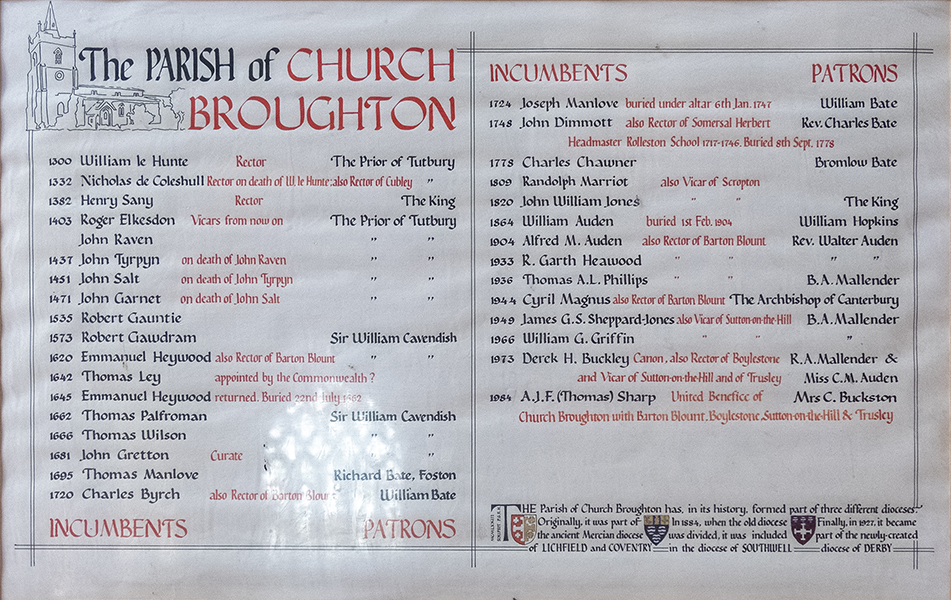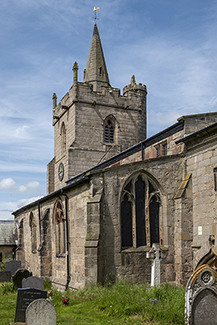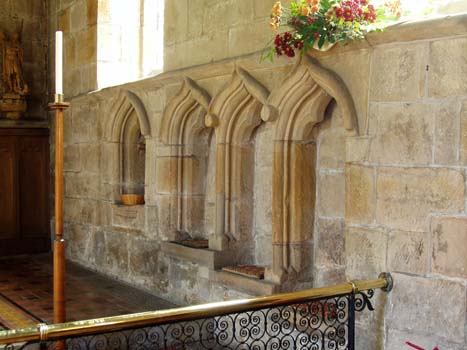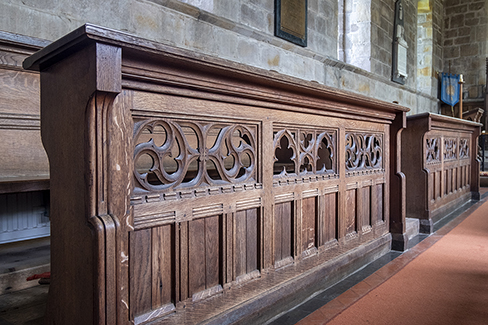 |
| St. Michael's in May 2022 |
 |
| The Nave, May 2022 |
 |
| Incumbents and Patrons from 1300 |
 |
| St. Michael's in May 2022 |
 |
| The Nave, May 2022 |
 |
| Incumbents and Patrons from 1300 |
 |
 |
|
| View from East in 2022 | South Arcade in the nave | |
 |
 |
|
| The Font | Triple Sedilia and Piscina | |
 |
 |
|
| Organ, 2022 | Choir stalls in the chancel |
South of the A52 road running from Stoke to Derby via Ashbourne, north east of the A51 road from Stone to Lichfield and north west of the A38 from from Derby to Lichfield there is some wonderful countryside. Here are full of picturesque villages, lying on the borders of Staffordshire and Derbyshire and including part of the valley of the River Dove. Among the villages are Longford, Church Broughton and Norbury in Derbyshire and Alton and Ellastone in Staffordshire. Leave the main roads and meander through the lanes to discover this charming area well off the tourist trail.
St.Michaels at Church Broughton dates mainly from the early 14th century. As the picture of the exterior and the nave show the aisles do not extend the full length of the church, leaving the narrow chancel well lit. The lower part of the tower are early 14th century too but the upper parts with gargoyles and battlements are 19th century. The roof was modified in the 18th century. Note the ogee arches above the sedilia and piscina. The font is Norman with a carved pattern around it.
In the church there is a list of incumbetns going back to William Le Hunte in 1300 when the patron was the Prior of Tutbury. The Priors retained this role with the exception of a period in the late 14th century until the Dissolution when the patronage was taken over by Sir William Cavendish. The church is now part of a United Benefice with Barton Blount, Boylestone, Sutton-on-the-Hill & Trusley.
On my second visit, in May 2022, I was pleased to find the church pleasantly but discreetly fragranced. During the pandemic, many churches have been closed leading to the build up of mustiness from mould, probably on old hymn books. It used to be the distinctive smell of second-hand bookshops, many of which have now disappeared to go online.
The Buildings of England, Derbyshire, by Nikolaus Pevsner, revised by Elizabeth Williamson, Yale University Press, 2002, ISBN 0-300-09591-0